As a company, Howa has been in business for over 100 years producing everything from textile looms to military and sporting rifles. The Howa Oryx combines the tried and true Model 1500 barreled action with a new, tough as nails chassis to offer an affordable rifle platform for many endeavors. I was fortunate enough to be able to get my hands on one of these chambered in 6mm Creedmoor from Legacy Sports International.
Breaking Down the Howa
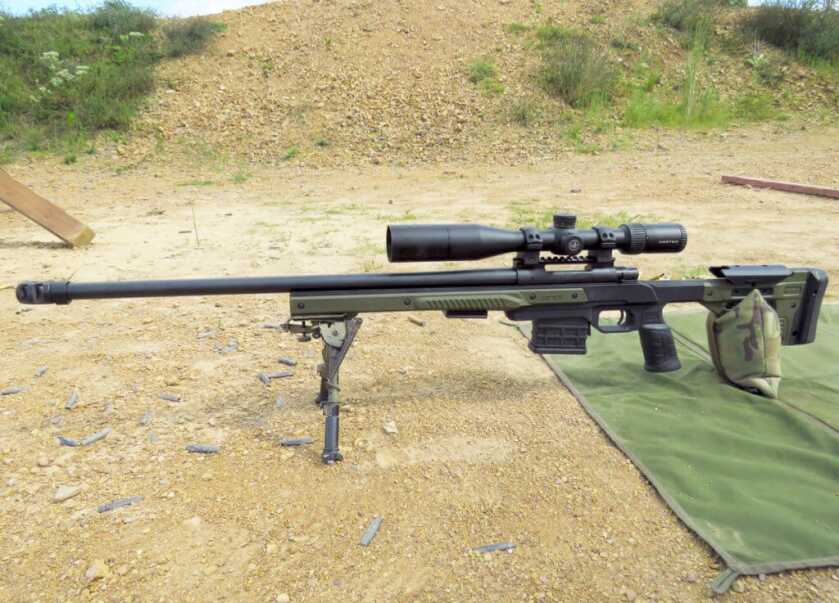
At the heart of this system is the Model 1500 barreled action, which is largely unchanged since its introduction in 1979. I haven’t handled many Howa rifles but I have to say I was pretty impressed from the get-go by its quality and great features.
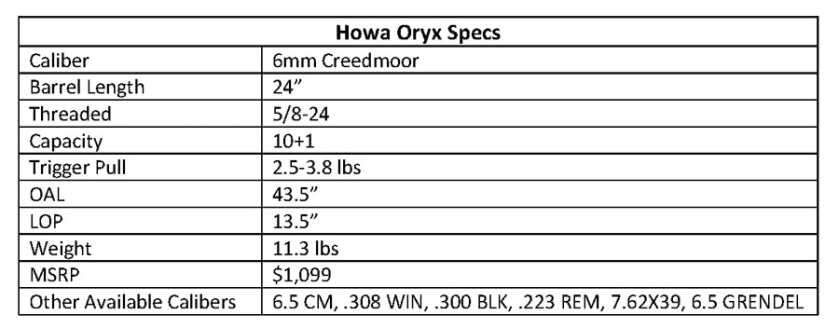
The forged steel receiver looks similar to a Remington 700 on top but the bottom is flat leading up to the integral recoil lug. When dropped into the chassis, that means there’s a flat surface interfacing with another flat surface, which should help reduce stress on the action under torque and aid in repeatability.
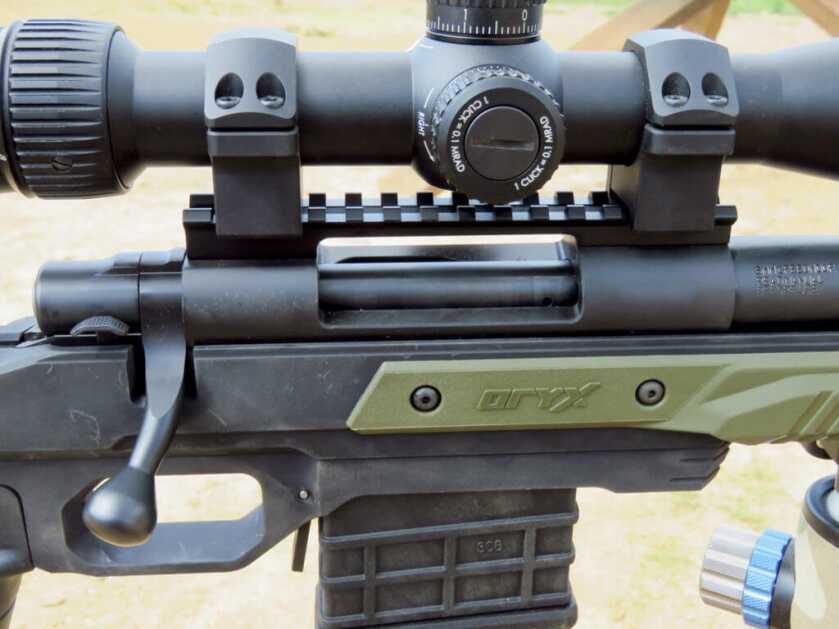
The steel bolt body and handle are forged as a single piece making it about as durable as it gets. There shouldn’t be any issues with snapping off bolt handles during rapid bolt manipulation like with silver soldered bolts.
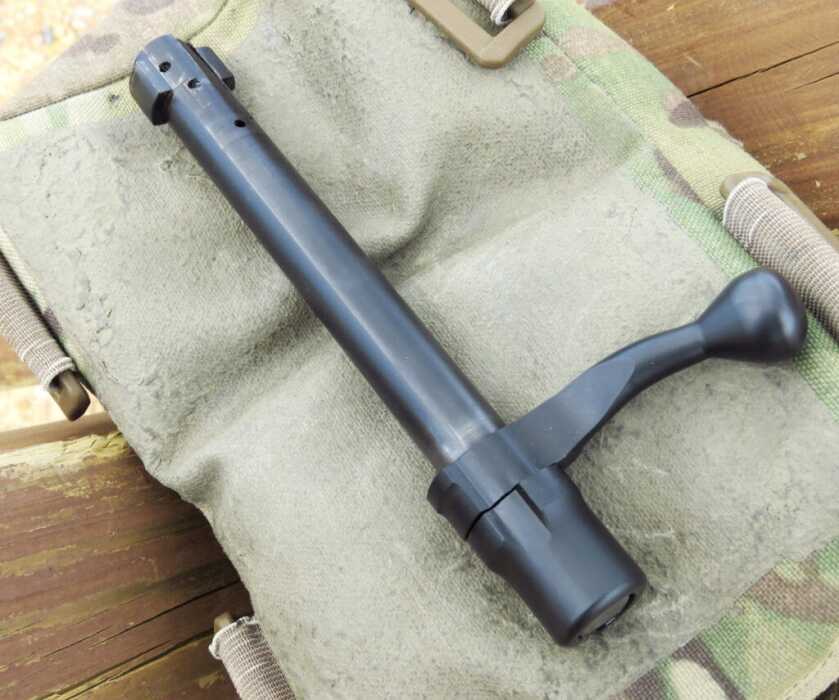
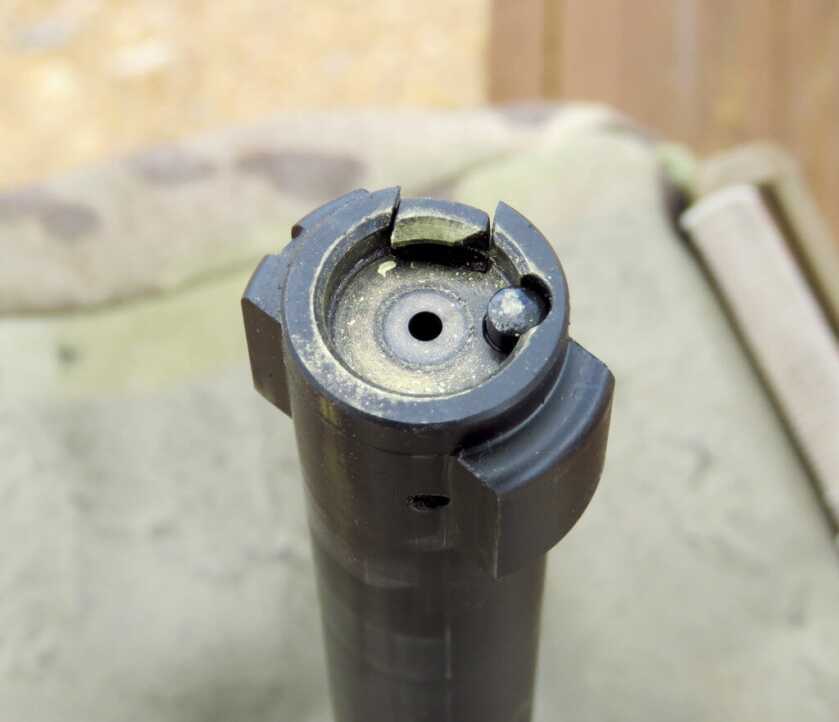
For dependable operation, there’s an M16 extractor and plunger-style ejector set up. During my range sessions, it worked perfectly and brass consistently landed about two feet away to my 3:30-4:00 o’clock position.
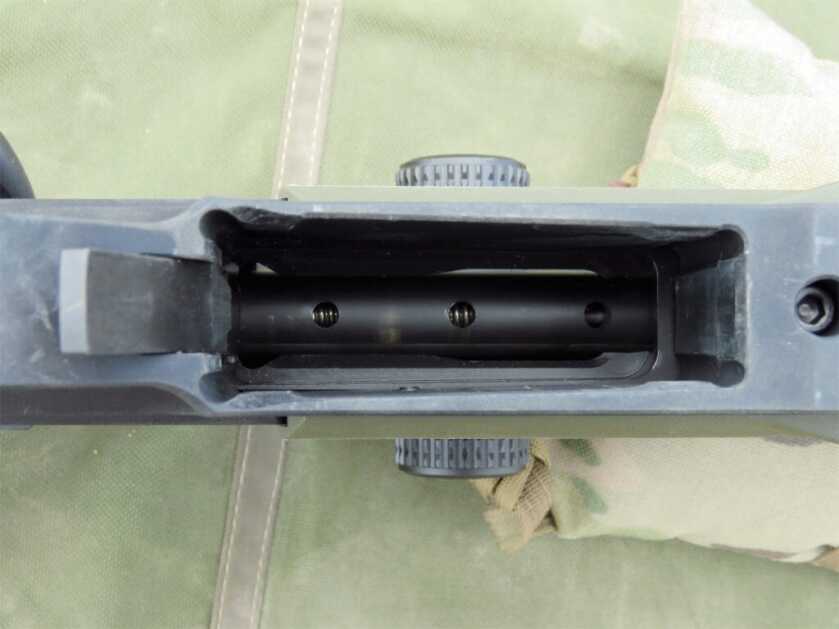
In the event of a catastrophic failure, the bolt has three pressure relief holes along the bolt body to vent gasses down through the mag well. Not only is the bolt very strong and safe, but thoughtful consideration was also given to make it easy to disassemble for maintenance. Simply hold the bolt body in one hand, grab the bolt shroud in the other, twist, and it comes out the back easily. That sure beats having to use special tools or inserting a punch through “slot B” to get the firing pin assembly out.

The two-stage HACT (Howa Actuator Controlled Trigger) system is standard and the literature says it should have a trigger pull between 2.5 – 3.8 lbs, with no creep and a crisp break. Out of the box, the pull weight was on the upper end of things but otherwise just as advertised. I tinkered with the adjustment screw, which only reduced the average to about 3.2 lbs. Honestly, it’s not what I was hoping for but it still breaks like a glass rod and it’d be more than adequate for anything I might do.
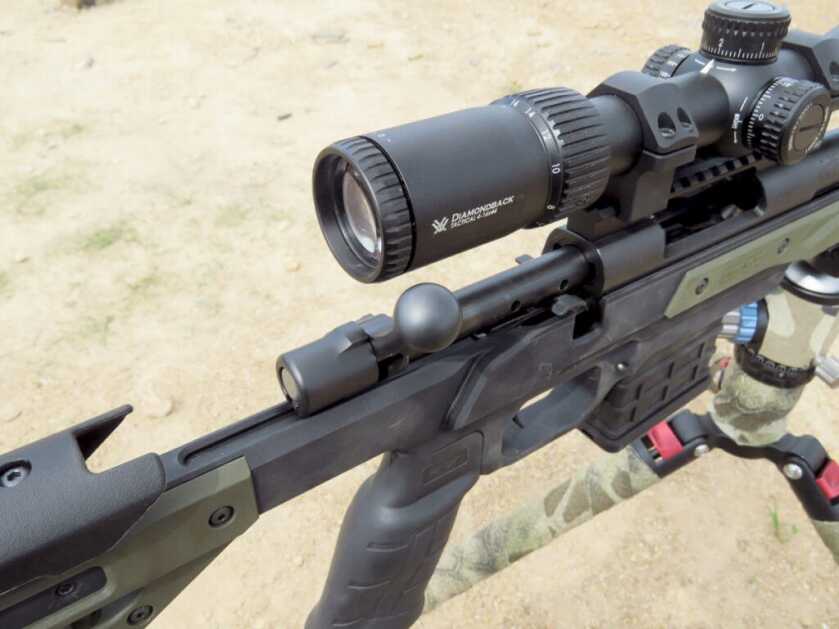
The 24” heavy contour barrel is hammer forged by Howa and finished with a threaded muzzle with a knurled thread protector provided if you aren’t using any muzzle devices. I appreciated the deeply recessed target crown and 45-degree chamfer to protect the lands and grooves from damage.

The twist rate on this 6mm Creedmoor is 1:7.5”, which is more than sufficient to handle everything from the lighter varmint bullets up to some of the heavier match loads.
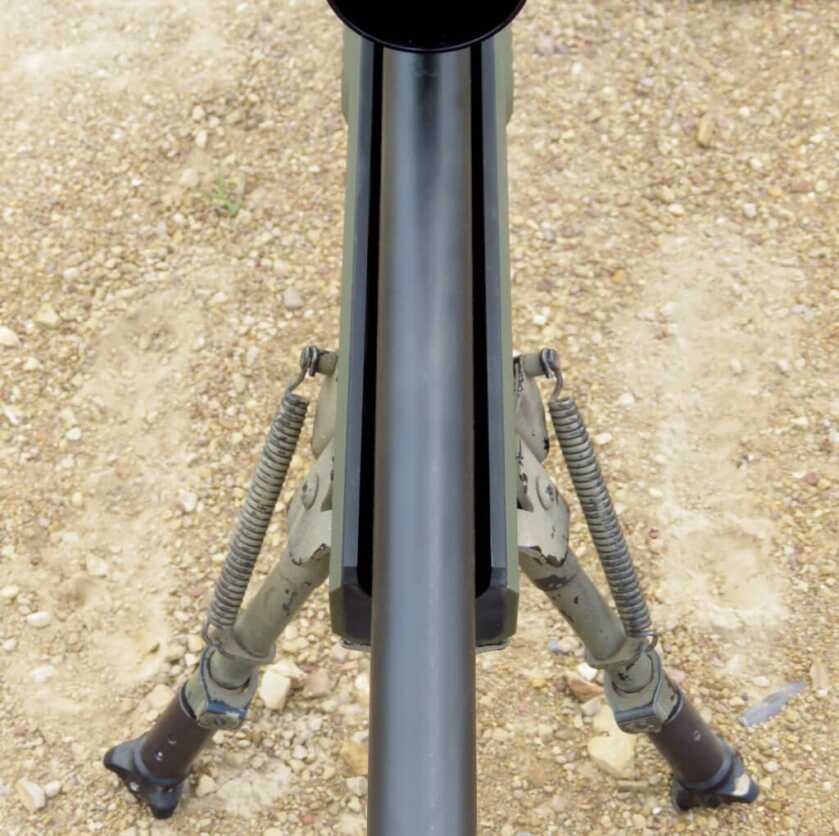
The Oryx Chassis
Oryx is a new brand from Modular Driven Technologies that came out of the gate strong by offering an entry-level chassis that didn’t skimp on quality. Some creature comforts had to be sacrificed along the way to keep it affordable but the designers kept the important things like comfort and modularity in mind.
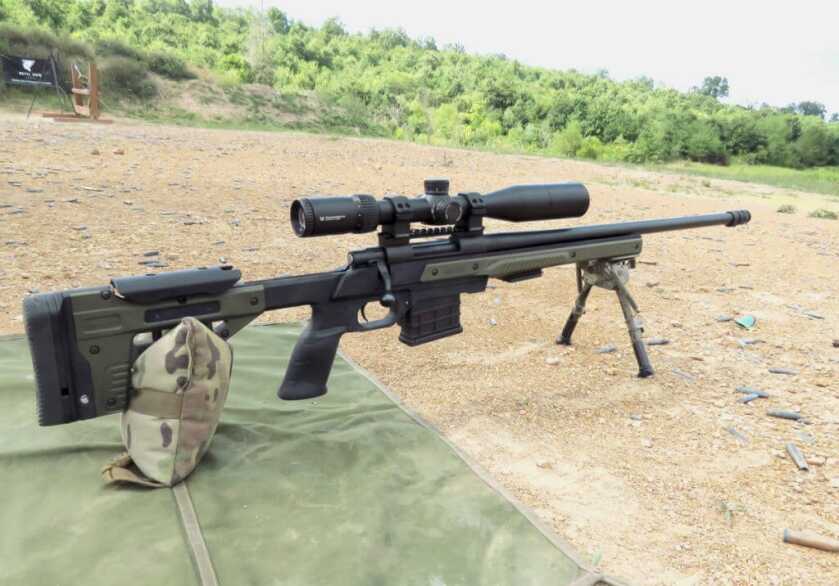
The main body of the chassis is one-piece, machined from 6061-T6 aluminum and hard anodized in flat black. An aluminum bottom metal made from the same material is bolted to the bottom of the main body to allow the use of MDT’s polymer magazines. Anywhere that bare skin might touch the chassis is met with a polymer component to offer some level of insulation and/or traction. It’s a minor detail to some but I can tell you that it’s no fun having to handle bare aluminum out in the freezing cold or blistering heat.
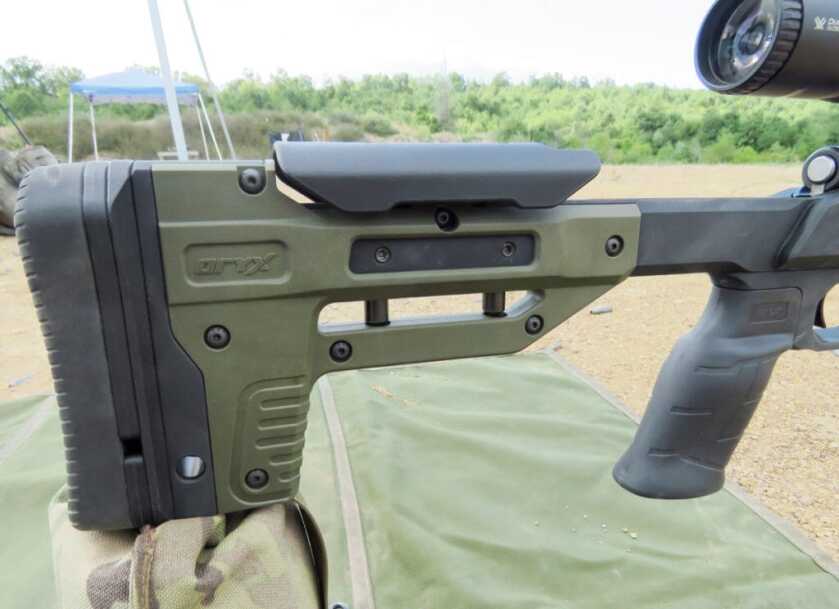
Of course, people come in all shapes and sizes so there is the ability to raise and lower the cheek piece up to 1.3” and adjust the length of pull. Changing the length of pull is done via a spacer system and with all of the included spacers installed it came to 13.5”.
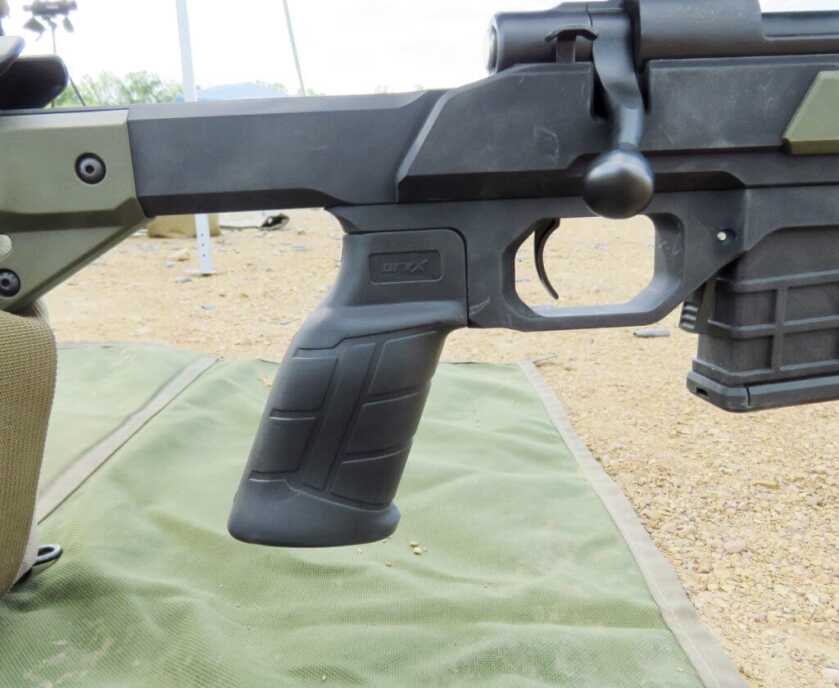
The MDT pistol grip is also probably one of the better AR-type pistol grips that I’ve used for chassis applications. The angle of the grip isn’t as extreme as an A2 so for me it was easier on the wrist in most shooting positions. For those that like to run their thumb along the side of the stock, the chassis also has a built-in thumb shelf on either side for your comfort.
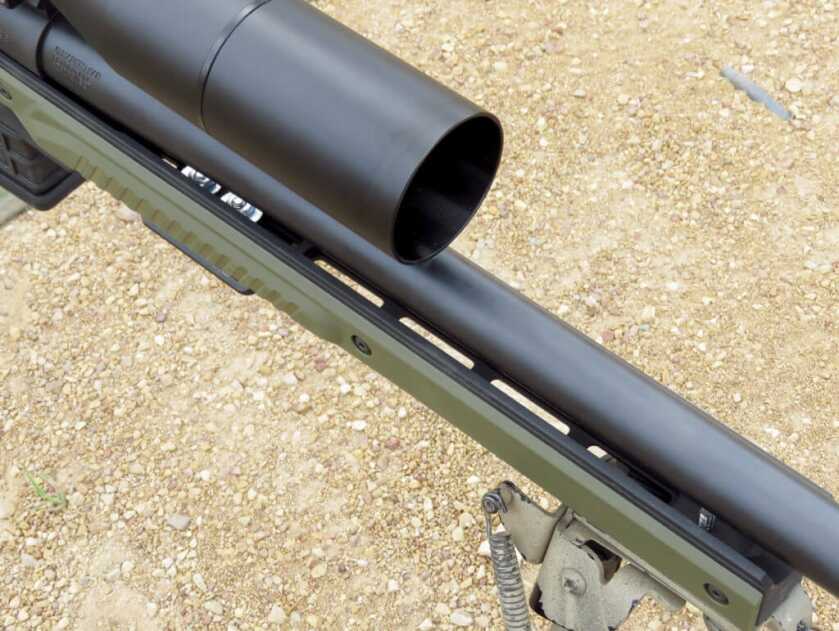
There is some limited modularity available with six M-LOK slots and a 10-32 hole in the front to help set the rifle up for different applications. The Howa Oryx doesn’t ship with a sling swivel stud or any M-LOK accessories, so if you want those items it will be up to you to provide them.

6mm Creedmoor
The use of 6mm bullets for varmint hunting and competition is hardly new since cartridges like 6X47 Lapua, 6XC, and .243 Winchester have been doing it for ages. So, I don’t think that the 6mm Creedmoor brings anything new to the table other than making 6mm more mainstream and accessible to the masses. If I want to enjoy the benefits of a slippery 6mm bullet I don’t have to get a bunch of reloading equipment and go through a lengthy load development process. I can easily get factory loaded options in a variety of flavors to cover everything from groundhogs to PRS matches to shoot through the same rifle.
To that end, I tried to get a diverse mix of ammo to cover my hunting and competition bases. Most of it was from Hornady but I also picked up a box of Berger 95 gr. Classic Hunter and Remington 100 gr. Core-Lokt ammunition. In full disclosure, I only used the Remington Core-Lokt to get on paper but I did manage to shoot a 100-yard five-round group to get an idea for its potential. I was more than a little surprised when it put up a 1 ½” group with four rounds touching in a nice 1⁄2” oblong cluster.
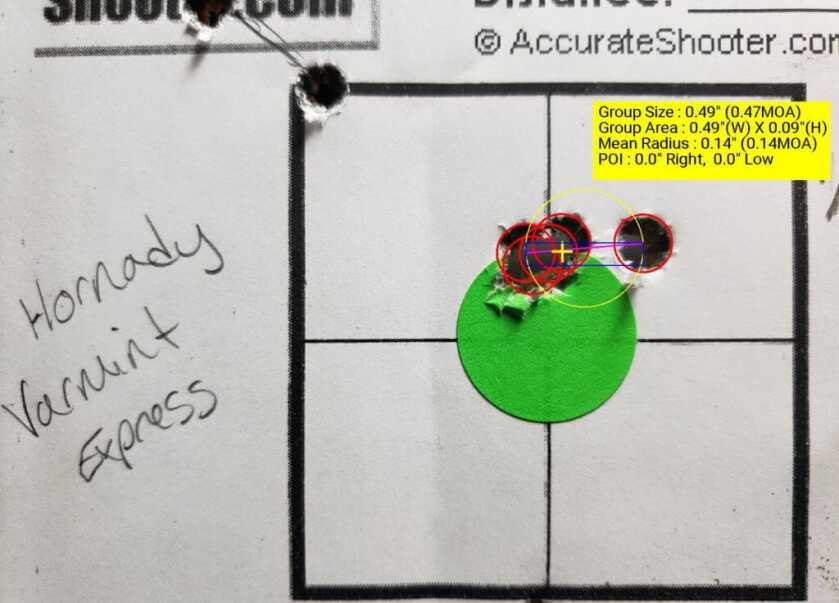
The four other types of ammunition didn’t disappoint either as I shot three 5-round groups for each at 100 yards using a bipod and a rear bag. Living up to Howa’s sub-MOA guarantee, all four put up 15-shot aggregates that were less than 1 MOA.

Although the heavier match bullets didn’t fare as well as I’d hoped I understood that these were also some of the first rounds through the barrel too. That being said, from my experience the sub-MOA performance so far would be more than adequate to participate in long-range matches and not feel overwhelmed.
A Very Versatile Rifle Package

A rifle package like this needs to be shot farther than 100 yards so I mounted up a few competition-oriented doodads and made plans to hit the range again. In the process of re-configuring the rifle I had to separate the action from the chassis, giving me the opportunity to check repeatability too.
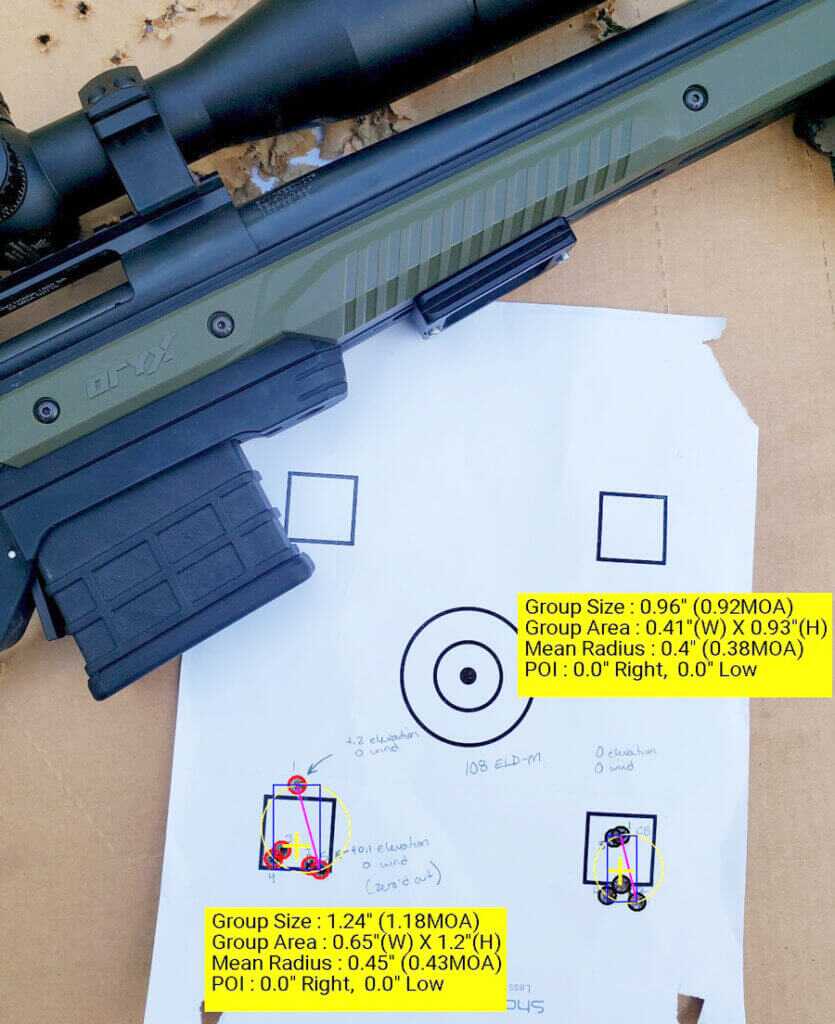
It turned out that confirming my zero was going to be a quick trip since the center of my first group was very close to my point of aim. I dialed too much elevation for my confirmation group, which sent the first-round high resulting in me coming down .1 mil to put the last four rounds into a .69” group. The accuracy with the 108 ELD-M’s seemed to improve as I thought it might once some more rounds went down the bore.
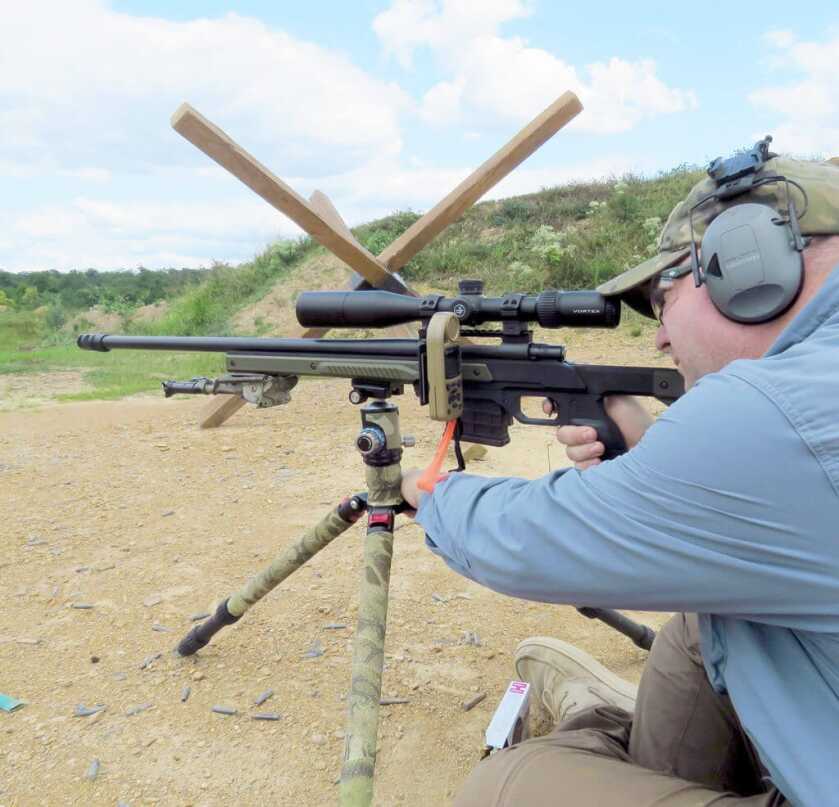
When I got out to the long-distance range I used my magic box (aka Kestrel 5700 Elite) to create a new gun profile based on the velocity and G7 BC of the 108 ELD-Ms. From the start, the dope was dead on, so much so that prone shooting the Howa Oryx got just a little too easy. I got up and dropped my Game Changer in the crook of a tank trap and gave myself five rounds to hit four targets from 210-480 yards. The minimal recoil and flat trajectory of the 6mm Creedmoor meant I was able to easily see my hits and my single miss at 480 that I got with a followup shot.
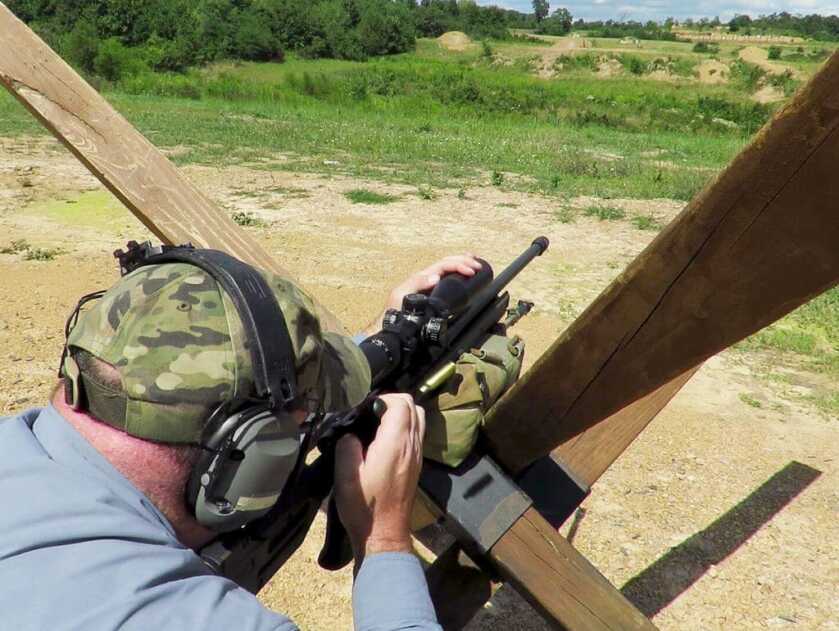
As a final “test”, I went prone again to set my sights on the 460-yard KYL rack, which can easily get the best of a shooter. I shouldn’t have worried though, I satisfyingly went one-for-one on all five plates, the smallest being about 1.5 MOA.
Mags…
The Howa Oryx came with one of MDT’s polymer .308 magazines and while I didn’t have any issues with it I think there are a couple of things that need to be discussed about the setup.
First, the chassis is listed as being AICS compatible and this is mostly true. I found this out when I wasn’t able to insert one of my personal steel AICS magazines and get it to lock up. After a little research I found out that the chassis is set up to run the MDT polymer magazines but if you want to use steel ones, you need to make one of two modifications. Option A is to remove 1.0mm from the top of the magazine catch and Option B is to file or grind approximately 3-5mm from the front of the steel magazine. The caveat with Option A is that you can only run the steel mags after that and while Option B is more work you’ll be able to run both steel and polymer mags. If the potential need to make modifications gives you the heebie-jeebies, the Magpul 5 and 10 round AICS magazine will work with the chassis without any issues.
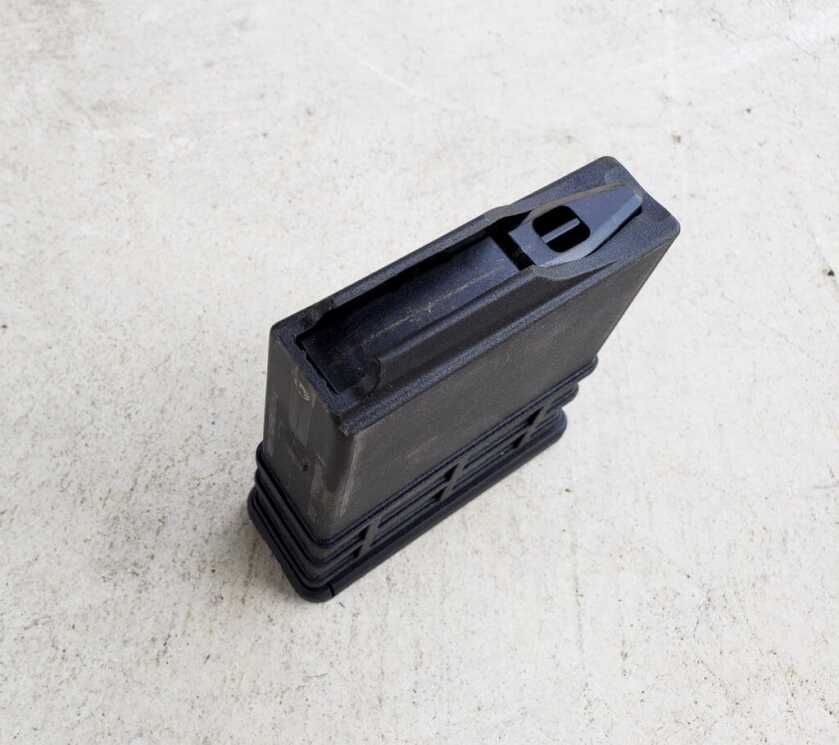
The second item is related to the first but it has to do with the MDT magazine’s internal length, which is only 2.820”. If you just shoot factory ammunition then it’s not a big deal but it will be limiting if you plan to handload and try to seat the bullets farther out. This is where making one of the modifications above could be worth it in order to take advantage of the longer COAL offered by steel AICS magazines.
Closing Thoughts
There was a time in the not too distant past when getting many of the features that this combination has meant going the full custom rifle route. I know some might find the accuracy and trigger pull off-putting but the rifle was exactly as advertised and I can’t complain about that. At the end of the day, it hit all the same targets from the same shooting positions as my custom 6.5 Creedmoor. The MSRP is listed at $1,099 for the standard action and $1,059 for the Howa Oryx using their mini-action. That being said, I have been able to find these for well under that after just a bit of searching. If you or someone you know is looking to get into long-range shooting, I highly recommend you look into the Howa Oryx.

Just bought the Howa 1500 (mini) Oryx in 6.5 Grendel. These are advertised as having 10 round capacity magazines–The OE magazine only holds 5, which I thought was disappointingly misleading advertising. 10 round magazines, at this point, are still super expensive ($120)
It would have been nice to have one of these 70 years ago.